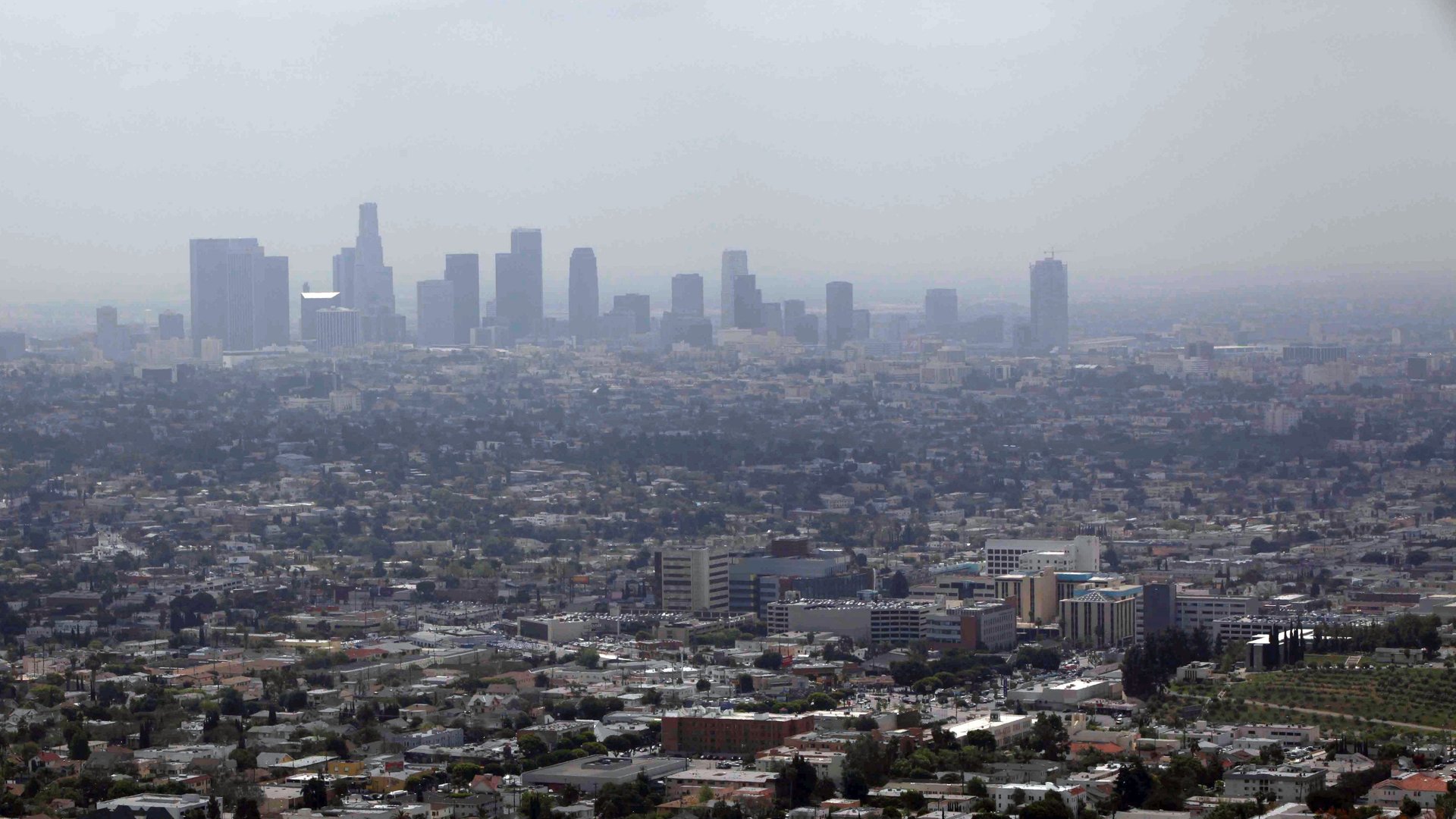Nearly half the US population breathes polluted air
This post originally appeared at Inside Climate News.


This post originally appeared at Inside Climate News.
More than 138 million people, or nearly 44% of the US, live in areas plagued with dirty air for part of the year, according to a new report.
Although the numbers show an improvement over recent years, too many people are still at risk of being exposed to toxic air, concluded the “State of the Air” study by the advocacy group the American Lung Association.
Every year, the association grades the air quality of cities and counties across the nation, using the most recently available data. Regions are graded A-to-F on two major forms of air pollution: ozone and particulate matter. Both are spewed out of coal-fired power plants and tailpipes.
Ozone, or smog, is the nation’s most pervasive form of air pollution and can lead to myriad health problems, from shortness of breath to lung cancer. This year’s report, published Wednesday, April 29, revealed local improvement on ozone between 2011-2013, but it was a mixed bag. At the project’s webpage, you can check out whether your city ranks among the cleanest, or dirtiest.
Los Angeles remained the top city affected by ozone—as it has for 15 out of the 16 years that these reports have existed. The city experienced 194 “orange” days (unhealthy for sensitive groups such as children), 20 “red” days (unhealthy for everyone) and three “purple” days (really unhealthy for everyone) during those three years. California also had eight of the top 10 counties suffering from the effects of ozone pollution.
Ozone is more common in warmer areas, such as Southern California. Despite the progress to clean up California’s air, and elsewhere, climate change “will make it harder to keep [ozone levels] down as we move forward with warmer temperatures,” because hotter weather drives ozone formation, said Janice Nolen, assistant vice president of national policy at the American Lung Association.
The Environmental Protection Agency’s standard for ozone is 75 parts per billion. The Obama administration is considering whether to strengthen that standard, lowering it to levels between 60-70 ppb, which scientists say is more protective of people’s health. The American Lung Association weighed in on this debate in the report, advocating for the lowest, or more protective, standard.
Ozone forms when chemicals such as nitrogen oxides (NOx), volatile organic compounds (VOCs), and carbon monoxides (CO) waft from power plant smokestacks, factories, tailpipes, and other sources, and then interact with sunlight.
Vehicles and power plants are also the main sources for particulates—small particles floating around the air that can aggravate asthma and affect the heart and lungs. According to the report, the eastern half of the nation experienced an improvement in year-round particulate pollution, thanks to improvements in car fuel efficiency and reduced emissions from power plants—the result of the shift from coal to natural gas, and the clampdown on pollution. For example, cities such as Birmingham, Alabama; Little Rock, Arkansas; and Wheeling, West Virginia experienced their lowest year-round particulate levels since 2000.
Meanwhile, on the other side of the country, a handful of cities in California saw an uptick in both annual and short-term particulate pollution. According to the study, increased heat and drought conditions are partially to blame in many of these cities.
Oil and gas drilling a new culprit
Air pollution, especially ozone, isn’t a problem affecting just urban areas in the summer.
For the first time in the “State of the Air” report, Utah’s rural Uintah and Duchesne counties were both among the top-25 worst counties for ozone. (In 2013, both counties had a combined population of approximately 55,000; Los Angeles had a population of nearly 4 million.) These two counties also have the most oil-and-gas producing wells in the state.
According to research published last year by the National Oceanic and Atmospheric Administration, oil-and-gas emissions are the leading cause of wintertime ozone in Utah’s Uintah Shale region.
Here’s how it works. During the winter months, Utah experiences what’s called an “inversion,” where a layer of cold air gets trapped beneath a layer of warm air. The release of volatile organic chemicals from extraction and production activities for oil and gas then react with the overlying warm air, and form smog, according to Steven Brown, other of the NOAA study authors.
Scientists are also investigating the impact of the oil-and-gas boom on summertime ozone in both Texas and Colorado. According to the American Lung Association’s study, many of Texas’s heavily drilled counties, such as Denton, Dallas, and Tarrant, also made the list of top 25 counties impacted by ozone.
In sharp contrast, Bismarck, the capital of North Dakota, the second-leading oil-producing state in the nation, was named one of the country’s six cleanest cities due to strong winds and low temperatures, according to Nolen from the American Lung Association.
For more like this, see InsideClimateNews.org.